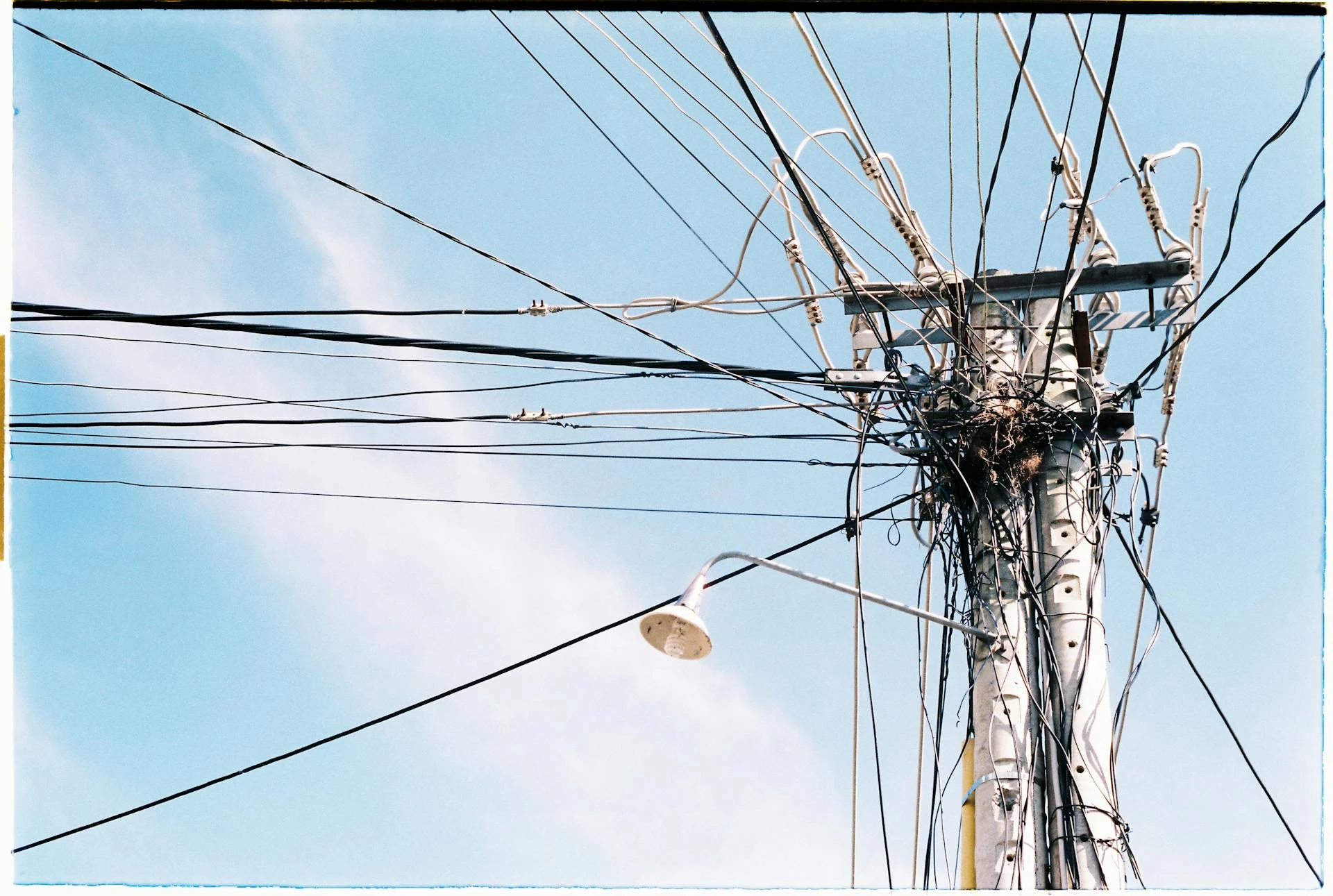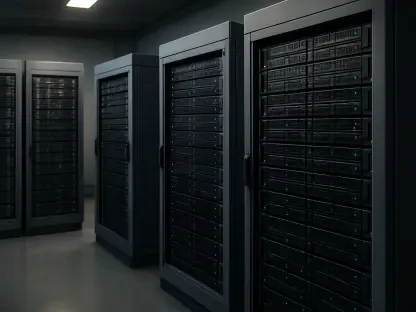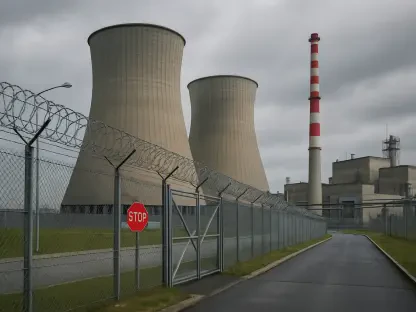In the heart of Indonesia’s bustling capital, Jakarta, a tangled mess of overhead utility cables has long marred the skyline, particularly in Central Jakarta, posing both an eyesore and a deadly threat to residents, while tragic accidents underscore the urgent need for action. These wires, crisscrossing above busy streets, have become a symbol of urban chaos. The Provincial Government of DKI Jakarta has rolled out a determined plan to address this issue, initiating a rapid one-month campaign to tidy up the cables while eyeing a long-term solution of moving them underground. Beyond mere aesthetics, this initiative is driven by the pressing need to protect lives, as past incidents have resulted in injuries and fatalities. With the city serving as the nation’s administrative hub, the state of its infrastructure reflects directly on its global image, adding further weight to the urgency of this project.
Immediate Action and Enforcement
Rapid Cleanup Under Strict Deadlines
The first phase of Jakarta’s cable management plan focuses on an intensive cleanup effort, targeting overhead wires that span across major roads within a stringent one-month timeframe. Acting Head of the DKI Jakarta Provincial Bina Marga Office, Heru Suwondo, has mobilized three dedicated teams to expedite the process of wrapping and grouping cables, with a particular emphasis on high-traffic zones in Central Jakarta. This rapid response is designed to mitigate immediate safety risks in areas where pedestrian and vehicular movement is heaviest. The government’s approach leaves no room for delay, signaling a commitment to transforming the city’s cluttered skyline into a safer, more organized space. Non-compliance with the deadline will not be tolerated, as authorities have made it clear that cables remaining in hazardous positions will face severe consequences, including being severed—a bold move to enforce accountability among utility providers and ensure swift progress.
Safety remains the cornerstone of this urgent initiative, as the chaotic state of overhead cables has already claimed lives and caused significant harm. Recent tragedies, such as motorists becoming entangled in low-hanging wires with fatal outcomes, have galvanized public and governmental concern, pushing for immediate intervention. Central Jakarta Mayor Dhany Sukma has expressed deep alarm over the pervasive disorder, highlighting how these wires pose a constant threat to the community. The one-month deadline is not merely a bureaucratic target but a critical window to prevent further casualties in a city where millions navigate beneath these hazards daily. This phase of the campaign underscores the human cost of inaction and prioritizes the well-being of residents above all else, setting a precedent for urban safety measures.
Community Role in Hazard Mitigation
Beyond governmental efforts, public participation is being actively encouraged to amplify the impact of the cable tidying campaign. Mayor Sukma has urged residents to report any dangling or hazardous cables they encounter, ensuring that potential dangers are addressed promptly. This call to action transforms the initiative into a collective responsibility, empowering citizens to play a direct role in safeguarding their neighborhoods. By fostering a sense of shared accountability, the government aims to cover more ground and respond faster to issues that might otherwise go unnoticed in a sprawling metropolis like Jakarta. This community-driven approach not only enhances the campaign’s reach but also builds trust between local authorities and the public, reinforcing the idea that urban safety is a joint endeavor.
The integration of public input also serves as a practical solution to the logistical challenges of monitoring every street in a densely populated city. With countless kilometers of cables stretching across Jakarta, the eyes of residents become a vital resource in identifying problem areas, especially in less accessible or overlooked districts. This strategy complements the work of specialized teams, ensuring a more comprehensive sweep of hazardous spots. Moreover, it educates the populace on the risks associated with overhead wires, raising awareness about an issue that many might have previously dismissed as a mere inconvenience. Through this collaborative effort, the campaign gains momentum, addressing immediate risks while laying the groundwork for broader urban improvements.
Long-Term Vision and Challenges
Planning for Underground Solutions
Looking beyond the immediate cleanup, the DKI Jakarta government envisions a transformative solution by relocating overhead cables underground, a move that promises both enhanced safety and a cleaner urban aesthetic. This ambitious goal, however, is currently delayed due to logistical constraints and the need to avoid disruptions during significant international gatherings like the ASEAN Summit held in September 2023. Until these hurdles are cleared, interim measures are in place to ensure cables are positioned at a minimum height of five meters, adhering to regulatory standards as confirmed by Jerry Siregar, Chairman of the Indonesian Telecommunications Network Providers Association (Apjatel). This temporary fix aims to reduce risks while the groundwork for a permanent underground network is prepared, reflecting a pragmatic balance between urgency and long-term planning in a city under constant scrutiny.
The transition to underground systems is not merely a cosmetic upgrade but a critical step toward modernizing Jakarta’s infrastructure to align with global urban standards. Such a shift would eliminate the visual clutter of overhead wires and significantly lower the chances of accidents caused by entanglement or electrical faults. However, the complexity of this undertaking cannot be understated, as it requires the development of integrated utility network systems (SJUT) and extensive coordination across multiple sectors. The delay caused by international events highlights the challenge of balancing local needs with global obligations, as Jakarta must maintain a polished image while hosting dignitaries. Despite these setbacks, the commitment to this long-term vision signals a forward-thinking approach to urban management, prioritizing sustainable safety solutions.
Navigating Infrastructure Obstacles
Implementing an underground cable network faces substantial logistical barriers, including the availability of infrastructure and the coordination required for large-scale excavation. The process demands not only significant financial investment but also meticulous planning to avoid disrupting the city’s daily operations, particularly in densely populated areas where space is at a premium. Apjatel has taken proactive steps by independently constructing underground networks to accelerate the transition, reducing reliance on government-built SJUT systems. Yet, even with these efforts, the timeline remains constrained by external factors, such as the need to pause major construction during high-profile events. This situation underscores the intricate balance between immediate safety needs and the slower pace of systemic change in a metropolitan hub like Jakarta.
Financial and regulatory challenges further complicate the underground relocation plan, as stakeholders grapple with the costs and permissions needed to execute such a massive project. High rental fees for using SJUT infrastructure, currently set at Rp 15,000 per meter per year by Jakarta Propertindo (Jakpro), have sparked debate among telecommunications providers who argue for a more affordable rate to prevent passing costs onto consumers. Negotiations with the Ministry of Communication and Information Technology are underway to establish a national standard for these fees, aiming to ensure fairness and accessibility in utility management. These discussions reflect the broader tension between achieving infrastructure goals and maintaining economic equity, a balance that must be struck to ensure the project’s success without burdening the public.
Collaboration and Regulatory Hurdles
Stakeholder Partnerships in Focus
Effective collaboration between the DKI Jakarta government and telecommunications providers is essential to the success of the cable management initiative, though it comes with its share of complexities. Apjatel plays a pivotal role, contributing to both the short-term tidying efforts and the development of independent underground networks to hasten the relocation process. This partnership demonstrates a shared commitment to improving urban safety and aesthetics, yet it also reveals the practical challenges of aligning diverse interests. Telecommunications providers must navigate tight deadlines while ensuring their operations remain viable, a task that requires seamless communication with local authorities. This cooperative framework, though strained at times, is a cornerstone of the campaign, highlighting the importance of unified action in tackling systemic urban issues.
Regulatory obstacles add another layer of difficulty to this collaboration, as securing permits for using public spaces like sidewalks and gaining access to private buildings often slows progress. Government support is crucial in streamlining these processes, ensuring that bureaucratic delays do not hinder safety improvements. Additionally, the high costs associated with infrastructure usage remain a sticking point, with Apjatel advocating for reduced fees to maintain affordability in service delivery. The ongoing dialogue with national authorities to standardize rental rates reflects a broader effort to create a sustainable model for utility management across Indonesia. This multifaceted partnership, while challenging, underscores the necessity of combining governmental authority with industry expertise to achieve lasting change in Jakarta’s cable landscape.
Cost Disputes and Consumer Impact
The financial implications of relocating cables underground have sparked significant debate among stakeholders, particularly regarding the rental fees for SJUT infrastructure. Set at Rp 15,000 per meter per year by Jakpro, these costs are deemed excessive by Apjatel, which argues for a reduction to between Rp 10,000 and Rp 11,000 to avoid burdening telecommunications operators. The concern is that high fees could ultimately trickle down to consumers, raising the price of essential services like internet access. This issue has prompted negotiations with the Ministry of Communication and Information Technology to establish a national benchmark for fees, aiming to balance the financial load across the industry while ensuring the project remains feasible for all parties involved.
Protecting consumers from cost increases is a priority in these discussions, as affordable access to telecommunications services is vital in a digitally connected era. The outcome of these negotiations could set a precedent for how infrastructure projects are funded and managed nationwide, influencing not just Jakarta but other Indonesian cities facing similar challenges. Meanwhile, the government must weigh the need for revenue to sustain SJUT development against the risk of alienating providers or end-users. This delicate balance highlights the broader economic considerations at play in urban modernization efforts, where every decision has a ripple effect on the public. Resolving these cost disputes will be key to maintaining momentum in the cable relocation plan without compromising service accessibility.
Urban Image and Global Spotlight
Elevating Civic Pride and Safety
The state of overhead cables in Jakarta is more than a logistical concern; it is deeply tied to the city’s identity as Indonesia’s administrative and political center. Mayor Dhany Sukma has emphasized that the disorderly wires are incongruous with Jakarta’s status, clashing with the urban layout and diminishing the sense of civic pride. Addressing this issue is seen as a way to elevate the city’s reputation, ensuring it presents a polished and modern facade to both residents and visitors. The urgency of tidying up cables, especially in high-visibility areas like Central Jakarta, is amplified by the desire to showcase a city that prioritizes order and safety, reflecting well on its governance and community values.
This focus on urban aesthetics goes hand in hand with the practical need to protect lives, as the cluttered cables pose ongoing risks to public safety. Past accidents have left an indelible mark, reminding authorities and citizens alike of the stakes involved in inaction. By tackling this visible problem, the government aims to send a message of accountability and progress, reinforcing Jakarta’s role as a leading metropolis in Southeast Asia. The campaign’s dual focus on safety and image underscores the interconnected nature of urban challenges, where solving one issue can have a transformative effect on public perception and quality of life. This initiative is thus a step toward redefining how Jakarta is seen, both locally and on a broader stage.
Preparing for International Attention
With international events like the ASEAN Summit drawing global attention to Jakarta, the state of its infrastructure becomes a matter of worldwide scrutiny. The messy overhead cables, particularly in central districts, risk undermining the city’s image as a capable host for such high-profile gatherings. The government’s push to clean up these wires ahead of such occasions reflects a strategic effort to align Jakarta’s appearance with its role as a diplomatic and economic hub. This urgency was evident in the decision to delay underground relocation until after the summit in September 2023, prioritizing temporary tidying to avoid construction disruptions during the event while still addressing immediate hazards.
The international spotlight adds pressure to ensure that Jakarta not only functions efficiently but also looks the part of a modern capital. The visual impact of organized cables, even as a short-term fix, contributes to a narrative of progress and readiness, essential for maintaining confidence among global partners. This aspect of the campaign highlights how local infrastructure decisions are influenced by broader geopolitical considerations, with Jakarta’s leaders keenly aware of the impressions formed by visiting dignitaries and media. By addressing the cable issue, the city aims to project competence and hospitality, reinforcing its standing in the international community while laying the foundation for deeper infrastructural reforms.









